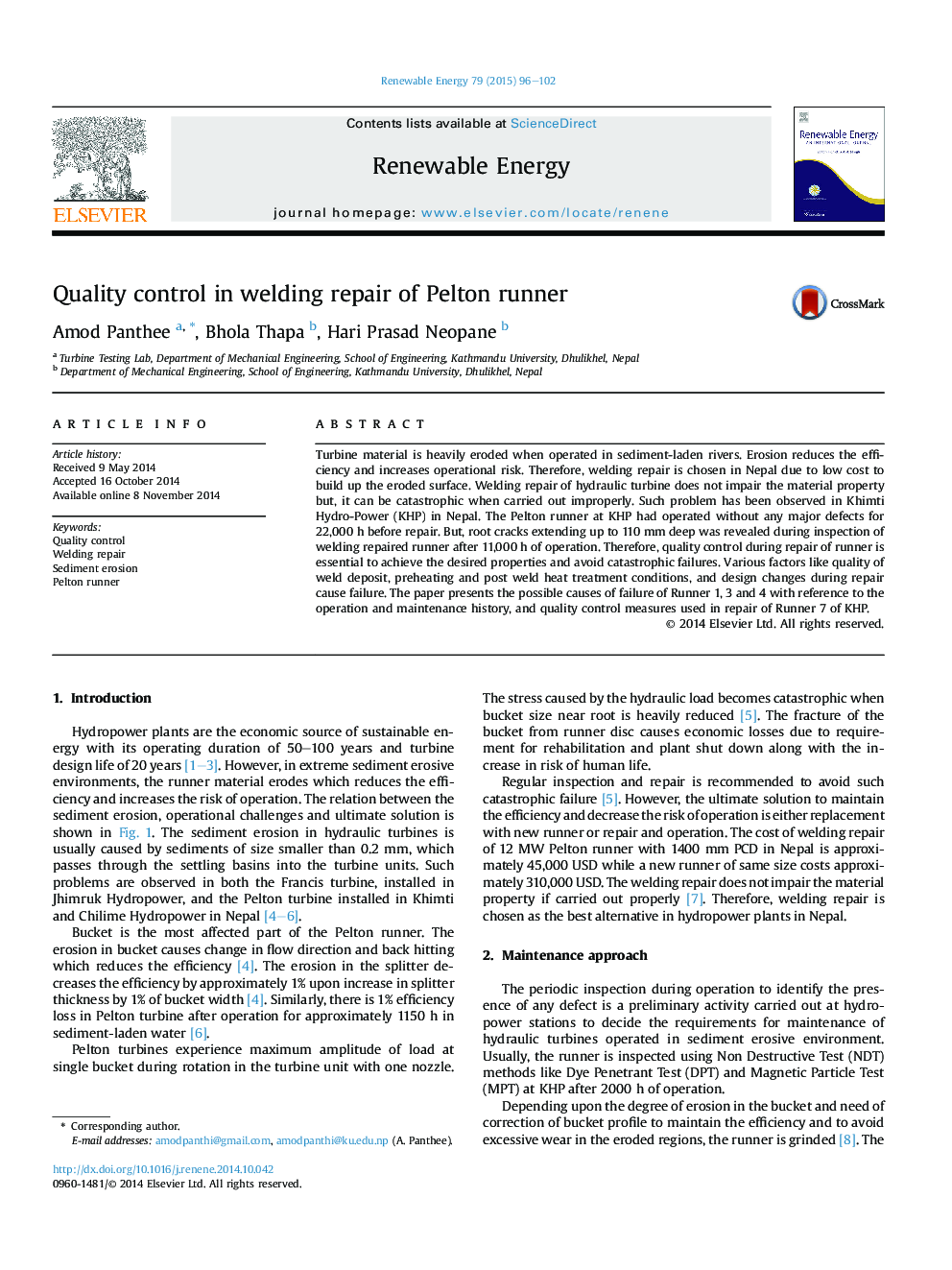| Article ID | Journal | Published Year | Pages | File Type |
|---|---|---|---|---|
| 299928 | Renewable Energy | 2015 | 7 Pages |
•Preheating runner, weld speed and PWHT should be carried out properly.•Reducing weld deposit and temperature difference minimizes residual stress.•Soak time and cooling rate should be controlled precisely during PWHT.•Runner geometry after repair should be checked with design templates.•Non Destructive Test (NDT) and balancing should be carried out and rectified.
Turbine material is heavily eroded when operated in sediment-laden rivers. Erosion reduces the efficiency and increases operational risk. Therefore, welding repair is chosen in Nepal due to low cost to build up the eroded surface. Welding repair of hydraulic turbine does not impair the material property but, it can be catastrophic when carried out improperly. Such problem has been observed in Khimti Hydro-Power (KHP) in Nepal. The Pelton runner at KHP had operated without any major defects for 22,000 h before repair. But, root cracks extending up to 110 mm deep was revealed during inspection of welding repaired runner after 11,000 h of operation. Therefore, quality control during repair of runner is essential to achieve the desired properties and avoid catastrophic failures. Various factors like quality of weld deposit, preheating and post weld heat treatment conditions, and design changes during repair cause failure. The paper presents the possible causes of failure of Runner 1, 3 and 4 with reference to the operation and maintenance history, and quality control measures used in repair of Runner 7 of KHP.
